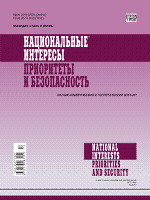Abstracting and IndexingРИНЦReferativny Zhurnal VINITI RAS Worldcat LCCN Permalink Google Scholar Online availableEastvieweLIBRARY.RU Biblioclub |
The practice of doping in professional sports and the consequences for the health of athletes
Available online: 14 August 2014 Subject Heading: THREATS AND SECURITY JEL Classification: Pages: 41-54
The article examines the history of doping in professional sports. The authors point out that doping was used in ancient Greece, provided that the "forbidden fruit" gradually became even sweeter. When at the beginning of the twentieth century, athletes often used drugs and alcohol in order to dull the pain and fatigue, then, later they began to use more sophisticated types of doping, including anabolic steroids, the substances that affect humans at hormone levels. Particularly, anabolic steroids have been widely used in American sports: bodybuilding and weightlifting in the late 1950s and early 1960s. It is curious that this was happening in the United States legally, through wide advertising campaign, medical advice and prescriptions prescribed by doctors. The influence of doping lead to ubiquitously recorded high achievements in sports. The historians describe this "doping era" in the following wording: "Artificially calmed shooters began to shoot better and highly-excited sprinters demonstrated the best starting speed. Tireless players supported the higher rates of games on the playgrounds that lead to increasing of the entertainment of matches. The weight began to soar skyward on weightlifting scaffoldings. It was mind boggling. A spectator was delighted. The games looked ecstatically". Later on, erythropoietin (substances that increase endurance and strength), diuretics (fluids, which excrete water and that increase flexibility and mask doping) appeared. Then, the people learned to make blood transfusions for athletes, saturate it with oxygen and special substances as well as to carry out other manipulations with blood. Gradually, doping becomes, as many experts have noted, not only more diverse, highly-specialized and efficient, but also dangerous for the health of athletes. Many international organizations and the states ceased to treat doping as a normal phenomenon. The doping became not only a serious offense, but even, in some countries, it was treated as a crime. The role of international and national agencies in the fight against this scourge dramatically increased. The article examines the notion of doping based on the norms of the World Anti-Doping Code and applicable international standards. The paper analyses the practice of doping in Russia and in the world using the relevant statistics of the Russian anti-doping agency (RUSADA) and WADA. The authors describe the consequences of doping for the health of athletes, including those associated with changes in gender identity. In addition, the article makes a critical analysis of the practice of issuing of permits for the therapeutic use of doping. The materials of the article can be used to develop measures on prevention of doping in professional sports. Keywords: ADAMS, Anti-Doping Administration and Management System, anti-doping testing, atypical finding, WADA, World Anti-Doping Agency, disqualification, doping control, prohibited method and substance, athlete supporting personnel, adverse analytical finding, registered testing pool, international-level athlete, competition period References:
|
ISSN 2311-875X (Online)
|
|








